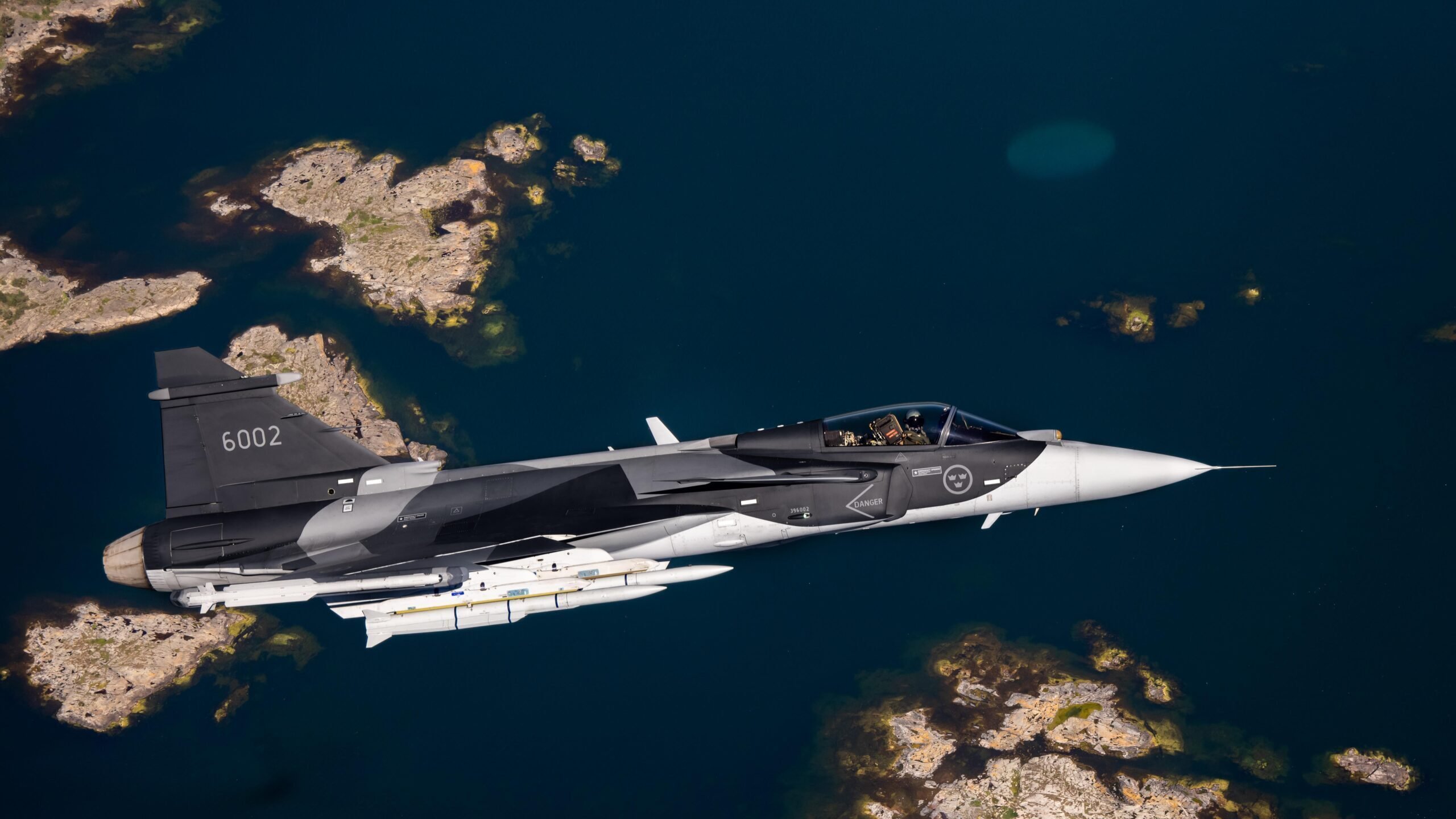
Saab’s Gripen fighter jet is the backbone of Swedish air power (Saab)
DSEI 2023 — Sweden’s defense material agency should commit additional funding into a new and “comprehensive” next generation fighter jet study that would open the way for Saab to test advanced tech required for a successor to the company’s signature Gripen E/F aircraft, Saab CEO Micael Johansson told Breaking Defense in an exclusive interview.
The recommendation comes three months after the material agency, FMV, and the Swedish Air Force told media at the Paris Air Show that studies and “fact finding” in support of next-gen fighter technologies were a priority.
Johansson confirmed Saab is part of an initial FMV study but said he hopes the agency “will now move forward with a more comprehensive study and put more money into it so we can test and simulate things.”
Still, the Gripen is expected to keep flying until around 2060, and Johansson allowed it is “too early” for Saab to consider the prospect of developing a next-generation fighter jet demonstrator.
“We are one of the few countries in the Western world that have the capability of doing these things [next generation fighter jet design], so of course, we want to be a player in the future as an OEM, including at a system of systems integration level.”
The “system of systems” approach covers the idea of a future fighter core vehicle seamlessly partnering or communicating with a range of adjunct aircraft, sensors and effectors in ways that in production fighter jets have been unable.
Saab’s next-generation jet ambitions have been slowed down at a political level after Swedish officials decided in July 2023 there is no “immediate need” to join the Franco-German-Spanish Future Combat Air System (FCAS) or the Global Combat Air Program (GCAP) involving Italy, Japan and the UK.
Stockholm and London had previously signed a Memorandum of Understanding in 2019 covering a “joint combat air development and acquisition programme,” but those ties have been replaced by the latest approach by FMV to move out with its own studies.
Areas for examination include other national next-generation fighter programs and national industry capabilities, according to Aviation Week.
Johansson: European Industry Needs Clarity On Materiel Production
Elsewhere in the interview, Johansson said he wants to see “clearer objectives” outlined by NATO and national governments across Europe to support industry increasing weapon systems production capacity, as several nations attempt to rearm themselves and Ukraine at the same time with relatively little coordination.
Generally speaking, the high demand for land based weapons and ammunition has led to production and supplier difficulties, though there have been signs, including joint procurement orders by the European Defence Fund, that the continent is making progress to ease the problem.
Even so, Johansson suggested some supplier problems persist.
“There are occasions where if you ask for a quote from a supplier today, you won’t get a proper lead time, and the quote is not valid for more than a month. You’ll then get [receive an offer of] a new quote and lead time,” he explained. “It is really sort of unstable in a way, when planning your actions.”
He stressed that Saab has taken decisive action to make new investments in “advanced weapons” amounting “more or less” to a quadrupling of production. As previously reported by Breaking Defense, those production plans cover a target to eventually reach an annual output of ground based weapons including the Next generation Light Anti-tank Weapon (NLAW).
Hours after Johannson spoke to Breaking Defense, senior NATO official Adm. Sir Keith Blount seemed to address the Saab CEO’s complaints about the alliance in a keynote address, saying that NATO’s “nascent” Defense Production Action Plan could help with inefficiencies.
“It’s recognition that NATO can change and be better at working with industry partners,” Blount said, noting the NATO Procurement Agency is attending DSEI in order to work more closely with industry. “It’s about leveraging economies of scale by considering a business partner [one] of the alliance rather than an individual nation.”
At an acquisition level, sales of Gripen aircraft have been testing for Saab, often losing out to the US F-35 fifth generation fighter. Johannson suggested he believed at times there was more at play than an objective assessment of the fighters themselves.
“We need political leadership to support us and obviously the US State Department, supporting US industries may have great leverage,” explained Johansson. “I wish that we [were able to] understand decisions [around acquisitions] in top level countries, but they should be less political and more about capability and end user requirements.”






















